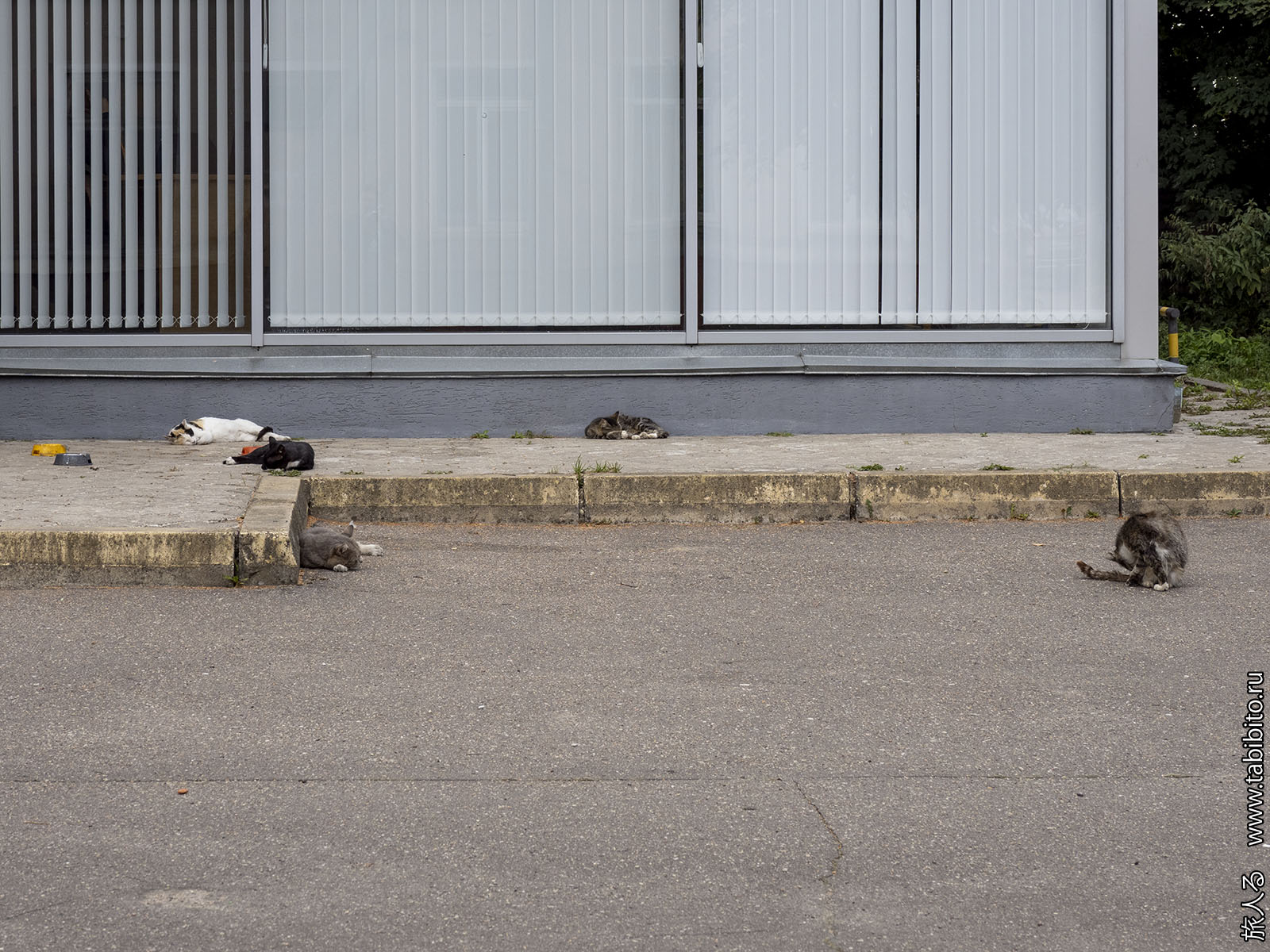旅人る - Tabibito
Sovetsk
The second most populated city in Kaliningrad oblast. Former German Tilsit, known for the Tilsit peace treaty between France and Russia in 1807 after the War of the Fourth Coalition. The most famous attraction is the Queen Louise Bridge across the Neman River, which used to connect Tilsit with the northern suburbs, but now is a border crossing between Russia and Lithuania.
If you are a foreigner, visiting Sovetsk can be tricky. Even Russians must acquire a special access permit to enter the town due to its proximity to the border. Perhaps, if you legally enter Russia through the Queen Louise Bridge, no one will stop you from seeing the city. But according to the law, you must pass through the border zone in transit without stopping. So try to get the special permit beforehand.
Neman river embankment with swings, flag pole and a free public toilet.
Lithuania on the other side looks something like this.
Lithuania is shown the letter Z.
The installation of the letter was preceded by complex calculations and drawing up drawings directly on the wall.

Single "Z" ad inside the town.
Small but pretty pedestrian Pobedy street.
A beautiful building with a knight on the balcony.
A monument to the Tilsit streetcar. There were four tram lines before 1944. After the war, the Soviet authorities decided that tram system is too splurge for such a small town and replaced it with a bus. The monument tram car never operated in Tilsit and was recently brought from St. Petersburg.
Someone has painted the hammers and sickles with red.
Former Evangelical Lutheran Church of the Cross (1911) at the intersection of Iskra and Lenin streets is used as a shopping center.
The lone bell tower remained from the Reformist church (1900).

The railway station with a steam locomotive. Only one passenger train per day ran to Sovetsk from Kaliningrad in autumn 2022.
Lots of well preserved old school buildings.
Center for Children's Art in a building originally built for a Jewish lodge (1926). In Soviet times, it was supplemented with sculptures of pioneers.
German barracks on Krasnoarmeyskaya street.
Sometimes you can see real German signboards, making their way through the layers of plaster and paint.
They are sometimes even put under glass during the overhaul.

The overhaul is making a full swing. Lots of restored old German houses to the west of Internationalnaya street.
Doors are restored or made anew according to old drawings and photographs.
Refurbished fittings with the logo of the regional office responsible for the overhaul.
There is a chance that in the coming years all or almost all of this will be put in order.
Details.
More details.
Most of all the local authorities are afraid to take on the most beautiful buildings. For example, the house at the intersection of Lomonosov, Parkovaya, Zhukovsky and Matrosov streets. It has been abandoned for more than ten years and its restoration would be too expensive.
The town is notoriously cat-friendly.
And why not be cat-friendly if there are so many kind old men who feed the cats?
Hey, two-legged, turn on the water!

Getting in (as of September 2022): simple 1 h 30 min ride from Kaliningrad by car, the bus takes just a 15 minutes longer. As mentioned above, the town can be accessed only with a special permit.
Where to eat: The Chipollone italian cafe on Pobedy street near Queen Louise bridge.
| << Gusev << Znamensk | Neman >> Bagrationovsk >> |




















































































































